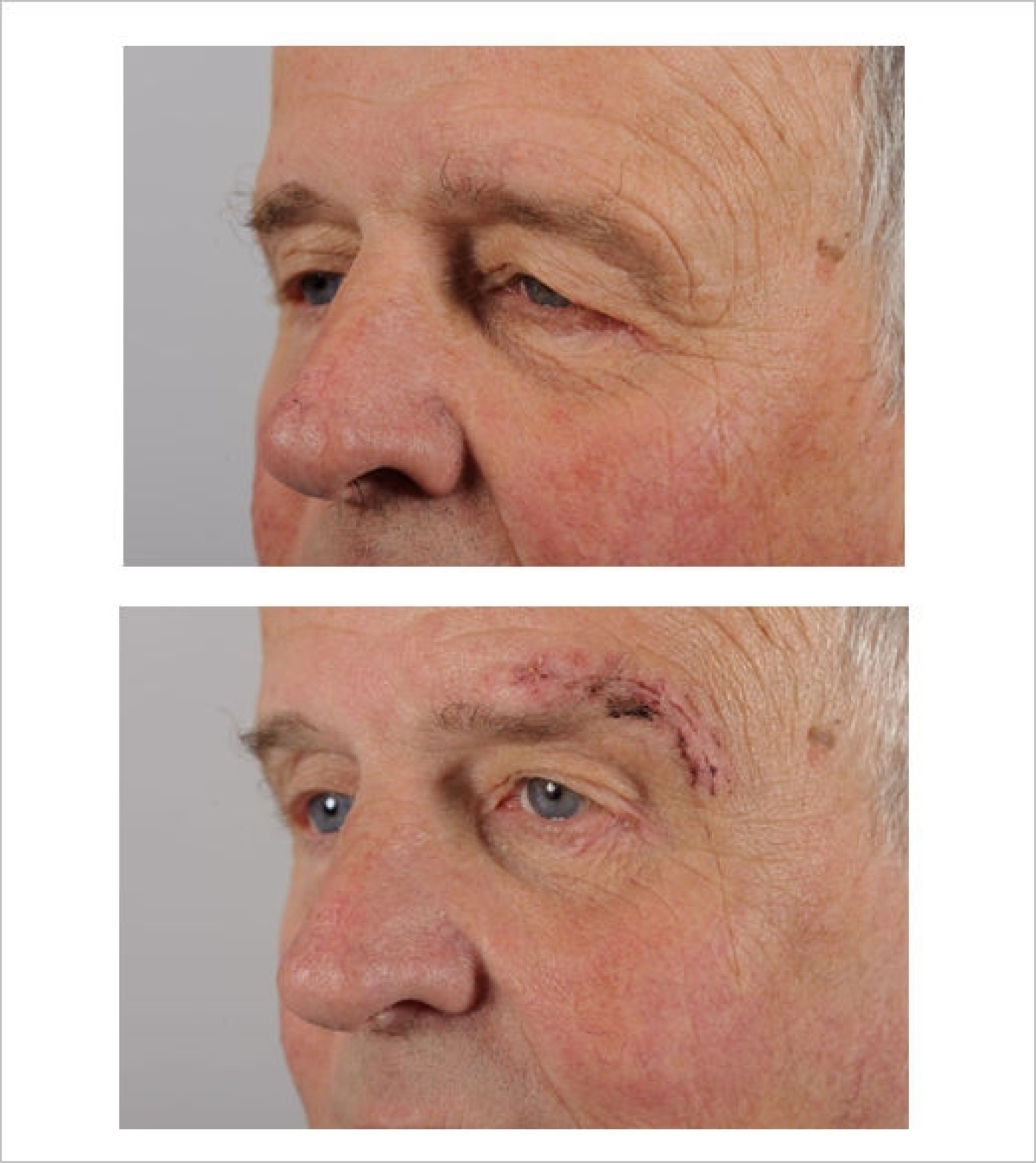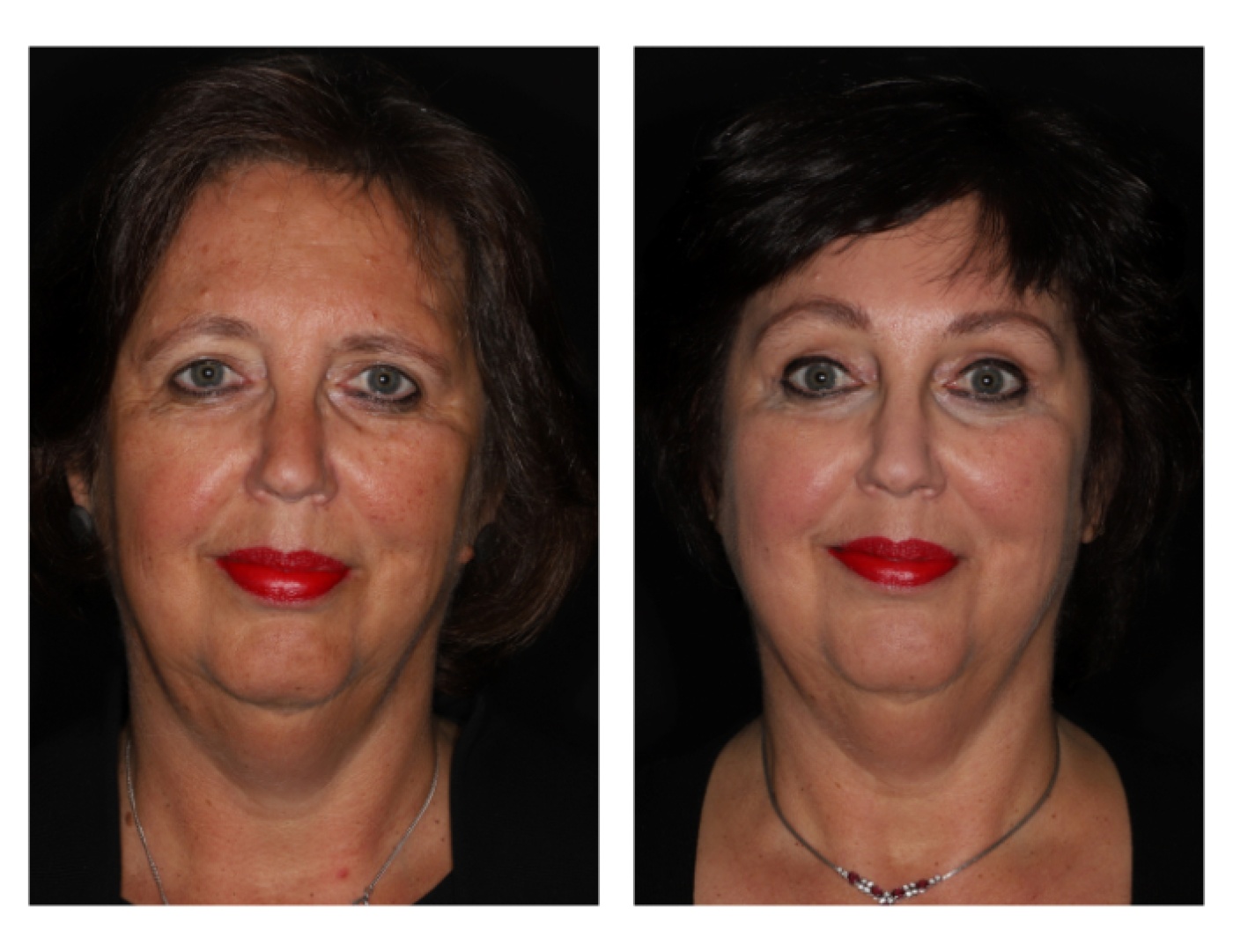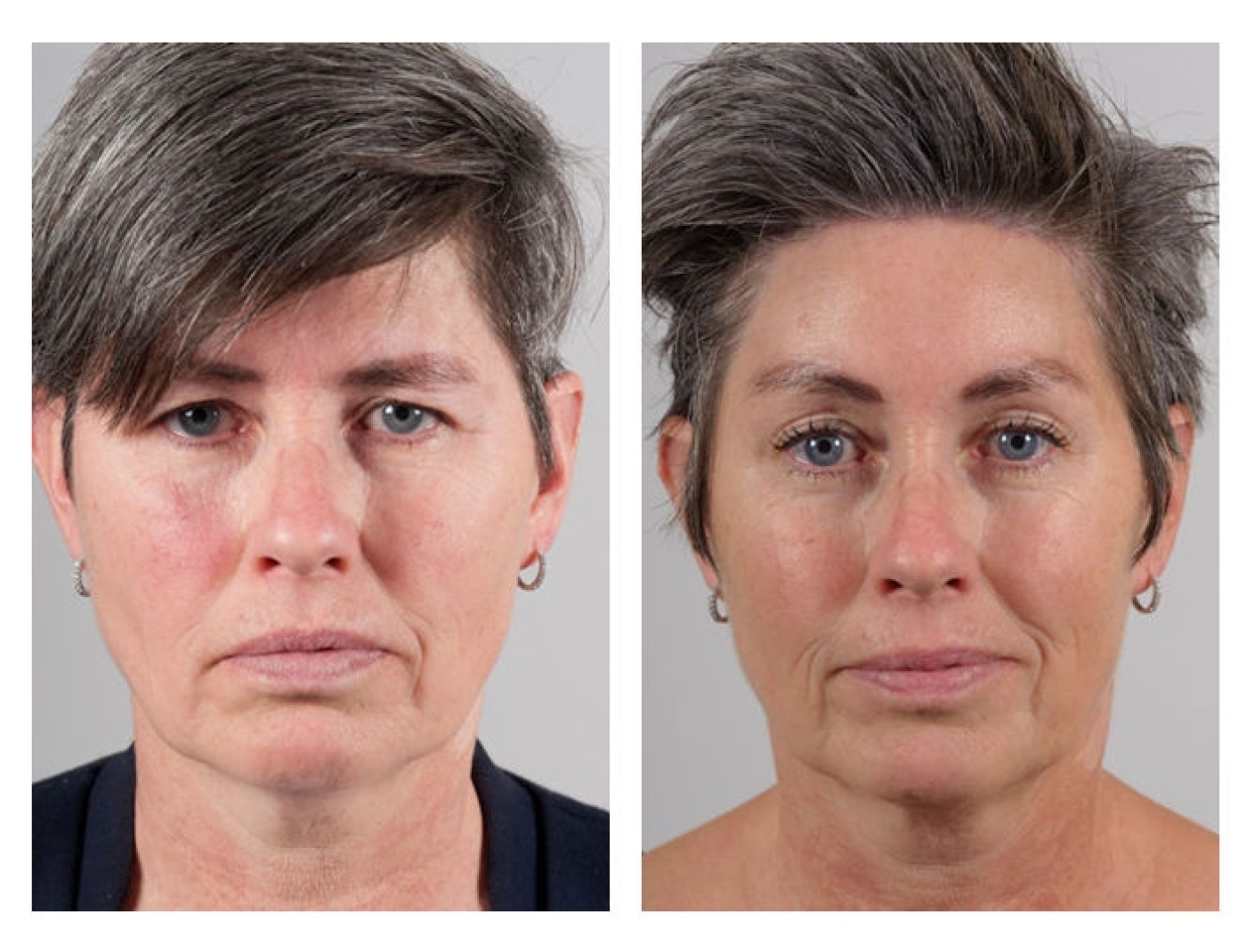Eyelid correction or forehead lift
You have decided you need an eyelid lift. However, I may change your mind, suggesting a brow and forehead lift. You suffer from fatigue, strained eyes and headaches, and you get comments such as: "Why that angry look?” from those around you. These symptoms and comments will disappear after a brow lift, and you will look relaxed and well-rested.
1. What is a brow lift?
- We distinguish between drooping eyelids and drooping eyebrows. An eyelid correction in people with low eyebrows provides only temporary alleviation, with a less appealing result. Lifting the eyebrows or forehead will give a more permanent and refined result. The most appropriate treatment is selected based on the individual patient. There are several forehead and brow lift techniques, which we discuss further on this page.
2. What treatments are possible?
Subcutaneous forehead lift
The subcutaneous forehead lift has a more significant effect than the endoscopic method, making a better result perceptible and visible. The forehead skin and eyebrows are moved relative to the underlying forehead muscle and attach themselves to the muscle at a higher position during the healing process. This makes the result more permanent than the endoscopic technique. During the subcutaneous lift, excess skin is also removed. The height of the forehead remains the same or can even be shortened (if desired) to create an aesthetic improvement. The subcutaneous forehead lift produces a scar, partly in and partly behind the hairline. The visible part on the hairline will eventually fade.
Endoscopic forehead lift
This treatment loosens the eyebrows, the forehead skin and the forehead muscle from the bone and lifts this. This moves the hairline back, increasing or extending the forehead. The scars are hidden within the hairline. The endoscopic method is also suitable to remove a lipoma or exostosis from the forehead without a (visible) scar.
Limited brow lift
In some patients, a limited or direct brow lift is sufficient. In this treatment, some skin is removed, and the muscle is shorted, with a scar on the outer/upper edge of the eyebrow. This lifts the outside of the eyebrow. This technique is especially suitable if ageing has caused drooping of the outside of the eyebrow. It is easier to hide the scar in people with heavy eyebrows.
3. Who is the treatment for?
A brow lift is suitable for those who, after a day’s work, notice their eyelids sagging in front of their eyes (hooding). It is also a solution for people who look tired and worn down but who aren't, and in cases where Botox is no longer effective.
Others might suffer from headaches. Having to keep lifting their eyebrows will exert the forehead muscle and cause tension headaches. The tension can spread through the tendon plate over the scalp to the neck muscles and cause neck pain. The forehead lift moves the skin of the forehead and eyebrows relative to the forehead muscle, allowing the latter to relax. This reduces/eliminates headaches and neck pain.
A forehead lift positively affects forehead lines, the fold above the nose and the position of the eyebrows. It makes you look younger, more friendly, and more relaxed, giving you a more ‘open’ look.
Forehead lift for men
Men usually have lower eyebrows than women. In men eligible for a forehead lift and with a retracting hairline, the scar can be hidden in the upper forehead line. Another option is the limited brow lift, as mentioned above, with a scar in the eyebrow. The picture below shows the location of the scar in a limited brow lift. The photo album contains several examples of the forehead lift in men, with the scar in the upper forehead line. In men without a retracting hairline, the forehead lift is performed as it would be in a female patient.

In the limited or direct brow lift, the skin is removed with a scar on the outer/upper edge of the eyebrow. This lifts the outside of the eyebrow. On the left an example of this lift before and shortly after surgery.
4. What causes drooping eyebrows?
Excess upper eyelid skin does not cause a worried or angry look, but a drooping or sagging eyebrow does. Just think: when you try to look angry, you frown, pulling your eyebrows down.
After many years as a plastic surgeon, I concluded that drooping eyebrows are (largely) something you are born with. It explains that sometimes young patients have headaches, fatigue, and pressure on the eyes when they have low eyebrows. In most cases, the first issues arise around age 40, when ageing starts playing a role, next to the congenital component. Over the years, you have gotten used to it, and you didn't know better. The absence of the fatigue and the headaches, and the good aesthetic result of the forehead and brow lift are, both literally and figuratively, an eyeopener. In cases where the low eyebrows are linked to migraines, the forehead lift also positively affects this type of headache.
5. Brow lift treatment
Consult
During the consultation, I will map out your expectations and provide the best possible advice. All the techniques mentioned have their advantages and disadvantages. A well-considered choice is essential for the best result. My consultant will also be present at the meeting and will provide you with further information about finances, scheduling, and logistics.
Surgery
During a subcutaneous forehead lift, the entire forehead is given a local anaesthetic, and you will be given an IV sedative. During the procedure, you will be monitored by the anaesthetist and an anaesthesia assistant. Through an incision in the hairline, and on the outsides within the hairline, the skin is loosened across the forehead muscle, down to the eyebrows. The skin and eyebrows are lifted over the muscle, and excess skin is removed. The height of the forehead (the distance between the eyebrow and hairline) remains the same or decreases, depending on the aesthetic purpose. The stitches in the visible part of the scar are soluble; in the non-visible part (within the hairline), I use staples that are removed later. After the surgery, you will be fitted with a slightly compressing head bandage. The procedure takes 1.5 hours.
The limited brow lift is an outpatient procedure under local anaesthesia. During a limited brow lift, I remove the skin at the top and the outer sides of the brow, including the underlying muscle, in a half-moon shape. This technique only lifts the outside of the brow, making the treatment especially suitable for drooping eyebrows due to ageing. The procedure takes 45 minutes.
The endoscopic forehead lift is performed under complete anaesthesia. Through 5 minor cuts in and between the hair, the brow skin, brow muscle and the periosteum are separated from the skull bone, drawn up and reattached to the bone. This moves the hairline up a little, making the forehead a bit higher or longer. This technique provides a more limited lift than the subcutaneous method and is more suitable for clients who need less lift and for people with short foreheads. The procedure takes 1.5 hours.
After the surgery
After the subcutaneous forehead lift, you spend several hours in the recovery room with a bandage around your head. The following day, you can remove the bandage yourself, take a shower and wash your hair with your own shampoo. There will be some staples visible in the hair at the sides; the hairline is attached to the skin with a soluble stitch. Daily showering is good for the healing process, and you will not need a bandage after the first night. During the first week, you should avoid exertion. Try not to bend down but bend from your knees. After one week, the staples are removed, and the knots of the soluble stitch are cut off. The scalp may feel a little numb, but this will pass after several months. After two weeks, you can gradually resume physical activities and exercise. You may get some well-intended (critical) comments from your environment. I'll happily prepare you for this with tips and advice so you can recover in peace. After the endoscopic lift, you may suffer from nausea and headaches. You will receive medication to reduce these symptoms. Otherwise, the recovery is mainly similar to that after the subcutaneous lift. After a partial brow lift, the advice is not to exert yourself: no bending down, putting pressure on yourself, or lifting. The wounds can get wet in the shower. The stitches are removed after one week.
6. What complications may occur after a brow lift?
- In all techniques, bruising and swelling can occur around the eyelids. High blood pressure or the use of anticoagulants may increase this risk. Infections are fortunately rare after a brow and forehead lift. Swelling and severe forehead pain following a forehead lift are not expected and may indicate an infection. In exceptional cases, circulation problems may occur around the scar after a subcutaneous lift. This slows the healing process at the wound edges and creates a broader scar. This is more likely to happen in patients with a very high and long forehead, those with thin skin and in smokers. For this reason, I am somewhat reluctant to treat smokers unless they have stopped smoking for a long time. The subcutaneous and endoscopic forehead lift may temporarily reduce the sensation in the scalp. In the subcutaneous lift, this is related to the superficial skin nerves, which need some time to recover. The endoscopic lift involves deeper nerves that are affected during the lift procedure. Using a mini camera significantly reduces the risk of permanent damage to these nerves.

- The result is what counts. For a good picture of the treatment results, check out the forehead/brow lift before and after photos with the results of several clients.



